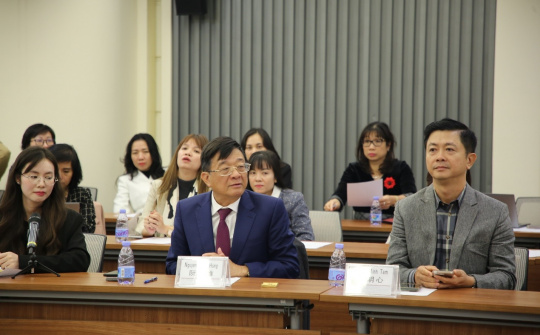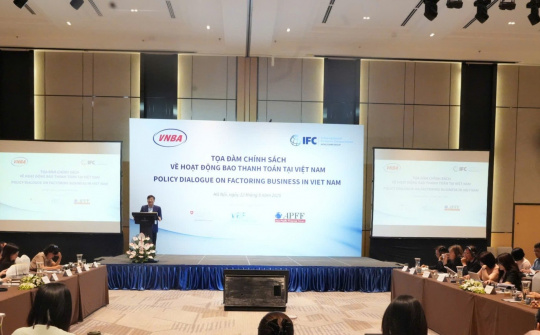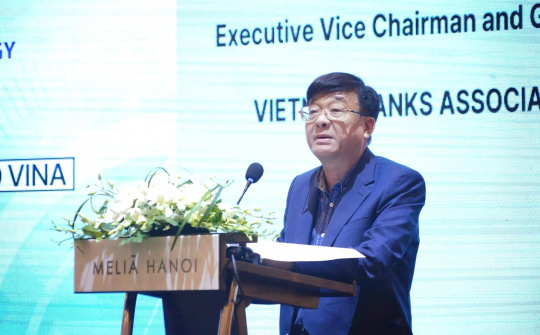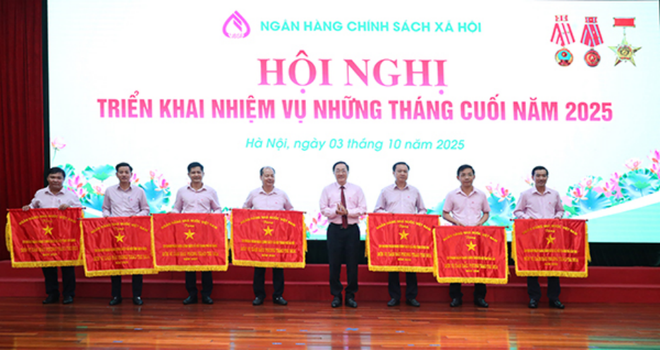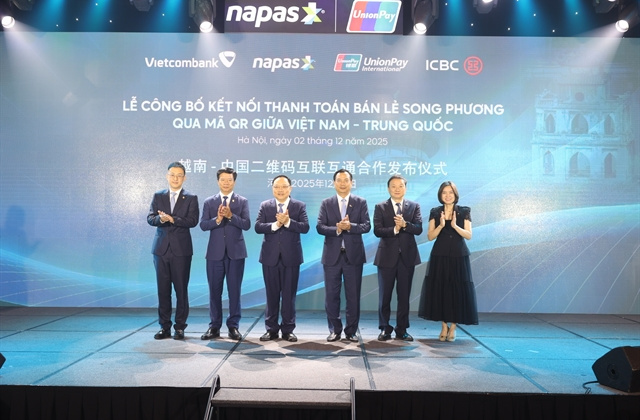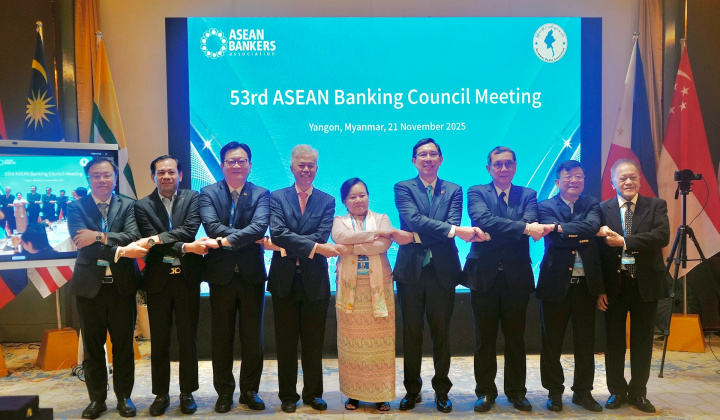
Managing director and partner Il-Dong Kwon and project leader Luan Nguyen of Boston Consulting Group
Globally, financial institutions are focusing on four strategic pillars for transformative improvements: portfolio optimisation, partnership reinforcement, transitioning into tech product entities, and streamlining operations through advanced technologies like generative AI (GenAI).
The transformative potential of GenAI is reshaping the competitive landscape, shifting discussions from ‘if and when’ to ‘what and how’. Early experimentation with GenAI is vital for insights necessary for large-scale deployment.
Drawing from Boston Consulting Group’s experience in developing GenAI with clients, five key success factors emerge: treating GenAI as a business change, rigorous change management for AI-human interaction, proof-of-concept trials, establishing modular technological architecture, and recognising scaling efforts from pilot to production.
The Vietnamese financial sector has shown robust growth, marked by significant investments in IT and an increasingly tech-savvy consumer base. From 2018 to 2022, total assets surged to over $652.17 billion, boasting a commendable compound annual growth rate of 13 per cent. Banking equities notably outpaced the overall market, growing 6.8 times faster than the VN-Index from 2017 to 2023.
At the same time, the importance of digital experience for Vietnamese customers is evident, ranking highest among considerations for financial institutions. According to our Retail-Banking Excellence benchmarking study conducted in April 2023, customers in Vietnam identified digital banking as the primary factor when recommending banks to family or friends (41 per cent).
Additionally, 62 per cent of customers regularly use mobile apps for financial services, making it the most preferred channel, followed by online banking at 47 per cent (see Chart 1).
The financial sector also demonstrates a remarkable focus on digitalisation, dedicating 9 per cent of their total revenue towards IT investment, surpassing various sectors such as technology, media and telecommunications (6 per cent), consumer goods (2 per cent), and manufacturing (1 per cent). However, the majority of this investment is directed towards operational and regulatory compliance, with only 20-25 per cent allocated to genuinely innovative initiatives.
Despite a substantial investment in digital transformation by the end of 2022, digital services in Vietnam lag behind the global average. According to our 360 Diagnostic, assessing over 300 mobile banking apps in more than 50 countries, Vietnam scores 30 on digital performance, just below the global average of 32 and significantly behind the benchmark of 60 set by best-in-class nations.
Vietnamese financial institutions can close this gap by drawing insights from advanced market practices and tailoring them to meet the needs of local customers more effectively.
Globally, financial institutions remain focused on four strategic imperatives. For portfolio optimisation, financial institutions globally analyse portfolios and key building blocks to identify lucrative areas for allocating resources, and divest less profitable domains.
Secondly, financial institutions embed their offerings in non-financial products and services, transitioning channels from mere lead generation to genuine partnerships. Products and services are distributed through partner apps, and collaborative sharing models are embraced.
Thirdly, financial institutions are restructuring, designating business units as “Product Owners,” and owning the value chain end-to-end with enterprise-wide platforms to support infrastructure, data services and more. This fosters efficiency and breaks down silos, leading to 2-6 times faster speed-to-market.
Finally, GenAI revolutionises finance by managing customer interactions and automating backend processes, including handling inquiries, credit evaluations, marketing content creation, compliance reviews, and HR assessments.
This transformation necessitates close collaboration between business and technical teams, along with fundamental shifts in competency building and reskilling/upskilling programmes. These efforts optimise workflows, mitigate misuse, and prioritise critical and valuable work for humans over machines (see Chart 2).

Unlocking and maximising
GenAI is a transformative force for global and Vietnamese financial institutions. One Swiss bank has used GenAI to automate loan processing, achieving a six-fold increase in efficiency. Similarly, a leading Spanish bank has employed GenAI for customer support communications, reducing costs by 20 per cent.
In our collaboration with a major Southeast Asian bank, we developed a virtual investment officer tool for relationship managers. This streamlined client information retrieval, summarised market insights, and provided explanations through an intuitive interface. The conversational tool boosted productivity of such managers by 50 per cent, making meetings more personalised and meaningful, and driving growth in assets under management for each client.
At the core of this initiative, we identified five essential principles for developing GenAI applications. First is treating GenAI as a business change - GenAI transcends mere technological innovation; it represents a fundamental shift in business strategy and workflow, significantly impacting human resources. As such, intentional strategic workforce planning is crucial to fully capture its opportunities.
The second aspect is rigorous change management for AI-human interaction. Comprehensive introduction sessions should cover what GenAI can and cannot do, emphasising the importance of result review to prevent misinformation and biases.
Next, thorough proof-of-concept trials and developing optimal use cases for GenAI requires early and iterative testing with end-users. This approach helps to minimise technical debts and costly errors as the project progresses.
Adopting modular technological architecture is also essential. Such an architecture provides the adaptability necessary for accommodating future modifications and updates to the GenAI application.
Effective engagement
Furthermore, recognising scaling efforts from pilot to production is key. The journey from piloting GenAI apps to production-ready products demands significant resources. This includes tasks such as data pre-processing and ingestion, quality control, front-end integration and design, security considerations, and addressing data privacy concerns.
In our extensive engagements with Vietnamese financial institutions, we have several recommendations. They should prioritise GenAI engines with optimal compatibility with the Vietnamese language. Leading models like OpenAI and Llama are primarily trained in English, resulting in varying levels of performance with other languages. Conducting holistic benchmarking reviews is crucial before committing to commercial contracts.
They must safeguard customer privacy by implementing data masking and anonymisation techniques during GenAI model interactions, especially when some large language model providers operate servers outside of Vietnam.
Institutions must formulate a robust data strategy, addressing data fragmentation and a lack of consistent sector-wide governance by formulating a high-quality data strategy, which is crucial for effective engagement with GenAI engines.
Technical expertise needs to be boosted in the Vietnamese financial sector, especially in areas like prompt engineering, through short-term external outsourcing and long-term in-house workforce development. Stringent review and control mechanisms must be also established to calculate return on investment and make informed decisions on GenAI deployment, considering the significant initial expenses that could amount to millions of US dollars.
Despite the challenges of ambiguity and complexity, leveraging both collective and organisational strengths can lead to innovative solutions, delivering lasting impacts for the financial sector and society at large.


